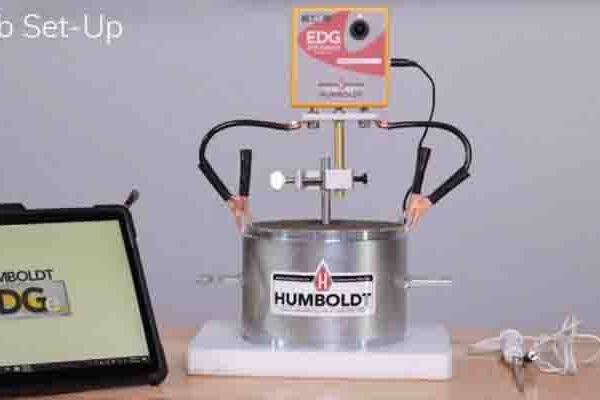Best Practices for Using Field Testing Equipment in Remote Areas
Conducting field tests in remote areas presents unique challenges. These areas, often far from infrastructure, may lack consistent power sources, have limited access to technology support, and present harsh environmental conditions. However, with the right preparation, equipment, and strategies, professionals can ensure reliable and accurate testing even in these challenging environments. This article explores best practices for using field testing equipment in remote areas, covering everything from preparation and calibration to dealing with logistical issues.
1. Proper Equipment Selection
The first step in field testing, especially in remote areas, is selecting the right equipment. In locations with limited access to resources or support, it’s essential to use equipment that is durable, portable, and capable of functioning without constant technical support.
For instance, tools like the Blaine Air Permeability apparatus, which is used to measure the fineness of cement, must be capable of withstanding rough handling and transport. Choose electronic or semi-automatic models that are not only portable but also require minimal setup or complex calibration, as remote field conditions may make it difficult to conduct frequent recalibrations.
Similarly, for concrete testing, it is essential to use reliable and rugged equipment such as the Rebound Hammer. This tool assesses the hardness of concrete surfaces and is often used in remote locations for rapid, non-destructive testing. Ensuring the tool is portable and user-friendly makes it ideal for use under challenging conditions.
2. Ensuring Proper Calibration Before Deployment
In remote areas, equipment is often subjected to rough conditions such as temperature extremes, moisture, and dust. This can affect the accuracy and reliability of the results. One of the most critical practices for using field testing equipment in such environments is to ensure proper calibration before deployment.
For example, in pile foundation testing, calibration is essential to accurately assess the bearing capacity of soil and foundation materials. Improper calibration could lead to erroneous conclusions about the stability and load-bearing potential of the foundation. Therefore, regular calibration checks must be conducted before leaving for the site, and, if possible, portable calibration tools should be included in the field testing kit.
Additionally, in tests such as Autogenous Shrinkage, which measures the shrinkage of concrete during curing, accurate readings are critical. Ensuring the equipment is properly calibrated before departure helps avoid costly mistakes in materials evaluation.
3. Transportation and Storage of Equipment
Transportation and storage in remote areas require special attention. When testing equipment is not in use, it should be stored securely to prevent damage from environmental factors such as dust, humidity, or temperature fluctuations. Carrying cases and protective packaging can safeguard sensitive equipment during transportation.
For example, GPR surveys used for detecting subsurface structures must be stored carefully to avoid damage to the antenna or sensors. Ensuring that the equipment is housed in a durable, waterproof case will prevent damage and ensure that it functions properly once on-site.
When transporting equipment to remote areas, consider the mode of transport as well. For instance, off-road vehicles or helicopters might be required to reach construction sites located in difficult terrains such as mountains or forests. In such cases, ensuring that the equipment is securely fastened and protected from vibrations is essential to maintaining its functionality.
4. Regular Data Backup and Communication Systems
One of the critical aspects of field testing in remote areas is the ability to back up and transmit data efficiently. Field equipment, especially for non-destructive testing (NDT) like Rapid Chloride Tests and Residual Ring Shear testing for soils, generates vital data that must be backed up to prevent loss. In remote locations, the chances of losing valuable data due to technical malfunctions or connectivity issues are higher.
To mitigate this risk, ensure that all testing devices are equipped with data storage capabilities and that data can be easily transferred to a secure backup system, either on a cloud platform or external drives. This also requires setting up reliable communication channels, such as satellite phones or radios, which allow remote teams to send data, receive instructions, and troubleshoot problems, if necessary.
5. Addressing Environmental and Weather Challenges
Weather can have a significant impact on field testing in remote areas. Extreme temperatures, heavy rainfall, and high winds can affect both the equipment and the results of tests. For example, rock fracture tests rely on precise pressure application to simulate fracture conditions in rocks. Temperature fluctuations in the field can cause pressure inconsistencies, potentially skewing results.
In such cases, it is important to consider weather-proofing the equipment or employing specialized devices designed to operate under extreme conditions. Using protective covers for sensitive equipment can shield it from dust and moisture. When possible, choose testing times when the weather conditions are most stable, avoiding testing during adverse conditions that could lead to inaccurate results.
6. Training and Expertise for Remote Field Tests
Proper training for technicians and field staff is crucial for ensuring that testing equipment is used accurately in remote areas. Without immediate access to experts or support teams, field technicians must be able to independently troubleshoot issues, perform calibration, and interpret data on the spot.
When conducting rock point load tests, for example, it’s important that technicians are familiar with how to set up, operate, and calibrate the testing device correctly, especially given the difficulty of accessing help in remote locations. Training programs should focus on equipping the field staff with the knowledge necessary to handle the equipment confidently, recognize potential issues, and apply best practices for maintaining testing accuracy.
7. Optimizing Field Workflows for Efficiency
Working in remote areas often means working with limited time and resources. Therefore, optimizing field workflows to increase efficiency is essential. One way to do this is by ensuring that all necessary equipment, tools, and consumables are included in the testing kit.
For instance, if conducting metal beam crash barrier tests in a remote location, ensure that all testing materials, including safety equipment, impact-testing tools, and calibration devices, are readily available and easily accessible. Well-organized field kits not only help save time but also ensure that nothing essential is forgotten, reducing the number of trips required to bring additional equipment to the site.
Conclusion
Field testing in remote areas presents a unique set of challenges, but by following best practices for equipment selection, calibration, and storage, professionals can ensure that tests are conducted efficiently and accurately. Proper preparation, understanding environmental constraints, and training the field staff are all essential elements in successfully carrying out field tests in these difficult conditions. Whether performing GPR surveys, conducting rock fracture tests, or utilizing pile foundation testing, following these best practices will help achieve reliable results, ensuring the safety and durability of construction and infrastructure projects.








